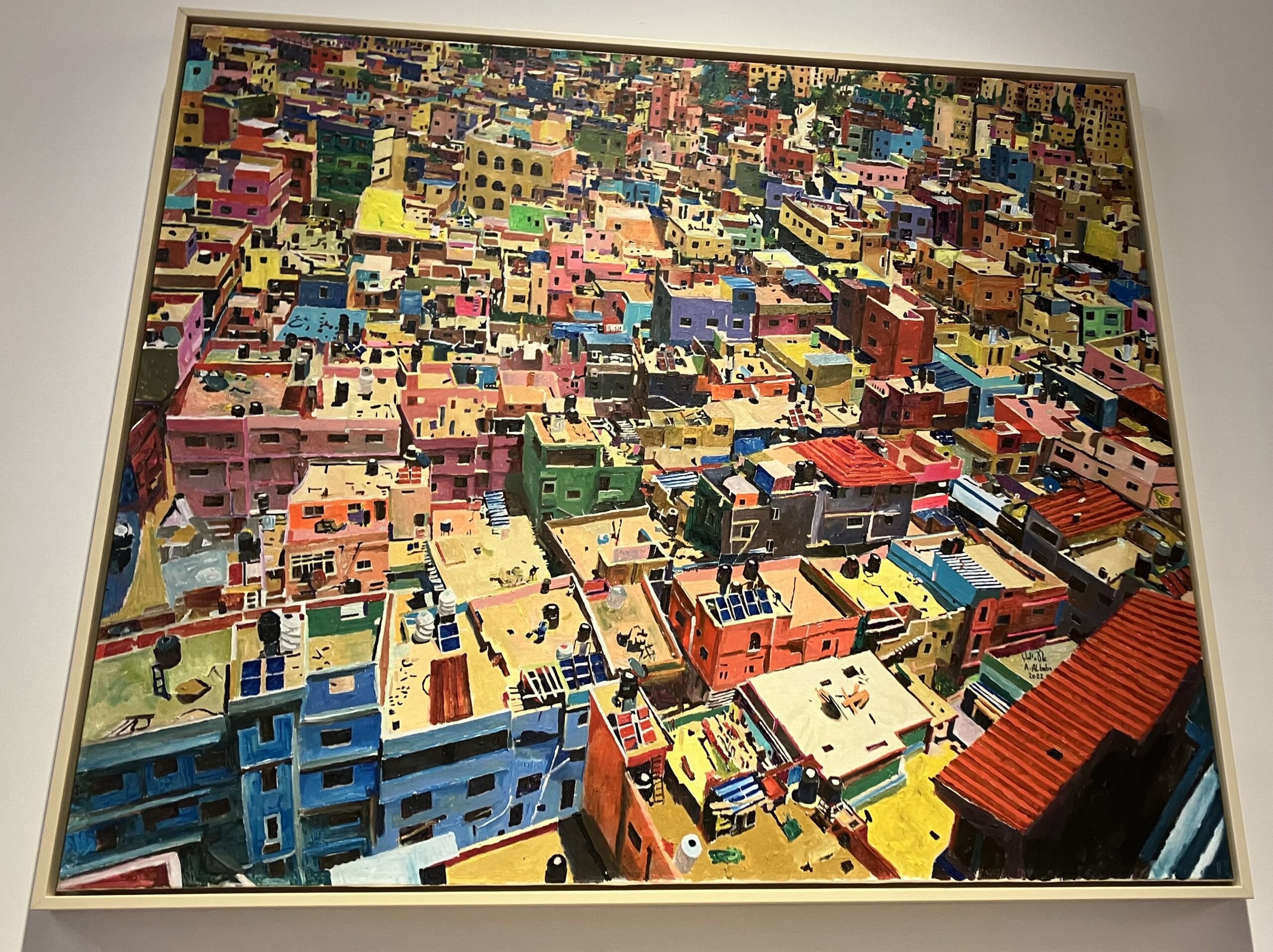“From Palestine: Our Past, Our Future”: al Time Space Existance una mostra sulla Palestina
A Palazzo Moro, Venezia, fino al 26 novembre, lo spazio è dedicato ad una mostra sulla Palestina organizzata dal Palestine Museum US.

A Palazzo Moro, Venezia, fino al 26 novembre, lo spazio è dedicato ad una mostra sulla Palestina organizzata dal Palestine Museum US.

(English translation below)
Fino al 26 novembre, all’interno della VI edizione di Time Space Existance dell’European Cultural Centre di Venezia, è ospitata la mostra From Palestine: Our Past, Our Future, una mostra sulla Palestina organizzata dal Palestine Museum US.
Dal 7 ottobre, noi, cittadini mondiali, siamo diventati testimoni del genocidio del popolo di Gaza. La continuazione di una storia di oppressione, sradicamento e inumanità che comincia più di cento anni fa, e che negli ultimi mesi, è esplosa. Quando si sente parlare di Palestina, il pensiero di chi è straniero al luogo è costituito da immagini di guerra, dolore, violenza. Quest’anno, il Palestine Museum US nel contesto della VI edizione di Time Space Existance dell’European Cultural Centre di Venezia, si concentra sulla ricostruzione attraverso la preservazione. La mostra rivela la tradizione dell’arte contemporanea in quanto preservatrice di storia e cultura in un contesto che ogni giorno combatte e resiste per esistere.
From Palestine: Our Past, Our Future presenta opere create in Palestina, e dalla diaspora palestinese, opere centrali al ricordo, al proteggere una memoria storica. Il museo sottolinea i cambiamenti della terra palestinesi e della vita di coloro la abitano prima e dopo la nakba. La cultura è essenziale per rivoltarsi alla forza della disinformazione e della propaganda alle quali giovani e anziani si devono confrontare oggi.
La Palestina non era stata rappresentata alla Biennale sin dal 2009, se non come quest’anno, come evento collaterale, ciò perché non è considerata una nazione dall’Italia. Quest’anno, la proposta iniziale del direttore del museo, Faisal Saleh, per una mostra intitolata Foreigners in Their Homeland, fu bocciata dalla Biennale. L’esposizione rifiutata avrebbe raccontato del sistema strutturale di apartheid nel quale vivono i palestinesi, della realtà dei checkpoint. Il direttore spiega come la creazione dello stato di Israele portò, e continua a portare, alla migrazione forzata, creando alti numeri di rifugiati. La politica di chi è considerato degno di autodeterminazione nelle esposizioni internazionali, e il modo in cui ciò è politicizzato a Venezia, va sottolineato.
Inoltre, la Biennale di Venezia, in quanto termometro dell’opinione pubblica, va contestualizzata nella scelta dei progetti che accoglie, e quelli che rifiuta, a maggior modo visto che questa informazione è spesso resa invisibile al pubblico. L’arte e l’architettura, in quanto forme di cultura strutturali, devono rivelare la loro identità politica, per restituire al cittadino la libertà di informazione e di pensiero. Noi giovani, che negli ultimi mesi ci siamo trovati in migliaia a protestare per i diritti umani e la giustizia sociale, dobbiamo essere all’avanguardia di questa nuova battaglia.
ENGLISH VERSION
Until November 26, the space is dedicated to an exhibition on Palestine organized by the Palestine Museum US.
Since October 7, world citizens, have become witnesses of the genocide experienced by the people of Gaza. It is the continuation of a history of oppression, uprooting and inhumanity that began more than a hundred years ago, and which in recent months has exploded. When you hear about Palestine, the thoughts of those who are foreign to the place are made up of images of war, pain, violence. This year, the Palestine Museum US in VI edition of Time Space Existance on European Cultural Centre in Venice focuses on reconstruction through preservation. The exhibition reveals the tradition of contemporary art as a preserver of history and culture in a context that combats and resists to exist every day.
From Palestine: Our Past, Our Future presents works created in Palestine, and from the Palestinian diaspora; pieces central to remembrance, to protecting a historical memory. The museum highlights the changes to the Palestinian land and the lives of those who inhabit it before and after the Nakba. Culture is essential to turn against the force of disinformation and propaganda that young and old are faced with today.
Palestine had not been represented at the Biennale since 2009, except this year, as a collateral event, because it is not considered a nation by Italy. This year, the museum director Faisal Saleh‘s initial proposal for an exhibition entitled Foreigners in Their Homeland was rejected by the Biennale. The rejected exhibition would have recounted the reality of the structural system of apartheid in which Palestinians live, of life between checkpoints. The director explains how the creation of the state of Israel led, and continues to lead, to forced migration, creating high numbers of refugees. Here, the politics of who is considered worthy of self-determination in international exhibitions, and the way in which this is politicized in Venice, must be underlined.
Furthermore, the Venice Biennale, as a thermometer of public opinion, must be contextualized in the choice of projects it welcomes, and those it rejects, especially given that this information is often made invisible to the public. Art and architecture, as forms of structural culture, must reveal their political identity, to restore citizens’ freedom of information and thought. We, in our youth, who in recent months have found ourselves in thousands protesting for human rights and social justice, must be at the forefront of this new battle.
